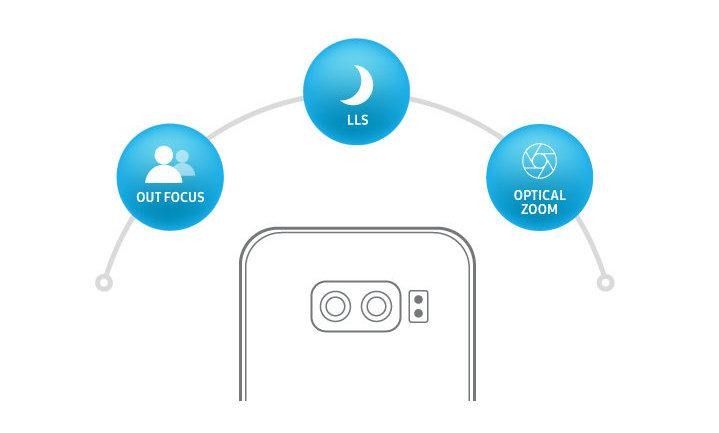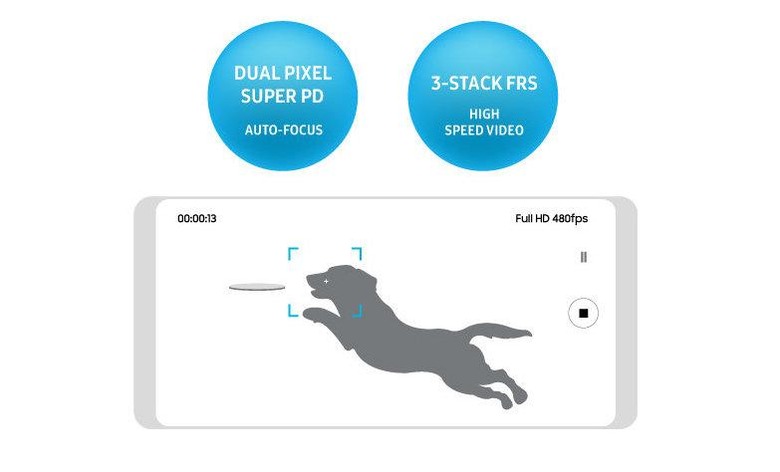Samsung's New Camera Tech Has Big Galaxy S9 Implications
With Samsung's Galaxy S9 fast approaching at Mobile World Congress, and the Galaxy Note 9 expected to follow later in the year, all eyes are on what camera technology the company might debut. Luckily for the phone-maker, Samsung also has a division making not only the Exynos processors some Galaxy S9 phones are expected to use, but image sensors too.
While most of the CES 2018 attention for Samsung Semiconductor was on the company's Exynos 9 Series 9810 chipset, it also had a new camera chip that's worth examining. Latest in Samsung's ISOCELL range, it promises maximum resolution, better low-light performance, and speedier autofocus, all in a package made with minimal phone bezels in mind. Read on for what you need to know about the new ISOCELL sensor.
Imagine phone cameras with the resolution of a DSLR
Smartphone cameras are increasingly capable, and indeed we've seen professional photographers and videographers look to phones rather than dedicated cameras for everything from photoshoots to motion pictures. Nonetheless, when it comes to pure resolution, usually standalone cameras – even point-and-shoots – have an edge over the sensors you'll find in your phone. ISOCELL wants to change that.

One of the latest additions to the company's range is the ISOCELL Slim 2X7. That made its public debut at CES 2018 earlier this month, and packs a full 24-megapixels into a smartphone-scaled sensor. To do that, Samsung had to figure out how to implement what are the industry's smallest pixels, each just 0.9um.
ISOCELL has a fix for low-light performance, too
Small pixels may be a boon when it comes to squeezing in maximum resolution, but they do have a downside. While in bright light the ISOCELL sensor may be able to take advantage of each pixel, in low-light situations they'll struggle to gain sufficient light to pick out detail. Samsung's answer there is Tetracell, which effectively merges the data from four neighboring pixels so as to work as one, larger pixel.
That means low-light performance is brighter and sharper. Samsung is also making use of HDR in the shape of Smart WDR. That captures multiple exposures in a single shot, combining them together to produce a more balanced image across the frame. Finally, Samsung uses what it calls DTI or "deep trench isolation": effectively, the pixels are deeper to avoid color crosstalk between pixels.
Autofocus is going to get faster
All the megapixels in the world won't help you if your photos and videos aren't in focus, and so autofocus speed is critical. That's doubly the case when you're working with a lightweight smartphone and trying to get your shot captured before hand-shake or wobble makes their mark. For that, ISOCELL relies on Dual Pixel technology.

It means ISOCELL cameras can use DSLR-style phase detection AF for still photography, along with what Samsung is calling Super PD. Over on the video side, there's 3-stack FRS (Fast Readout Sensor) to do the same thing while recording footage.
For ISOCELL, thin is in
A bulging camera was once a sign of photographic prowess in a smartphone, but now most buyers expect great quality images with minimal protrusions. Samsung Semiconductor actually has three ranges of ISOCELL sensors with that in mind: Slim, Fast, and Bright. As the names suggest, each has a slightly different focus.
For phones like the Galaxy S9 and Galaxy S9 Plus, ISOCELL Slim seems the likely direction: that way, it could trim down the bezels and still pack in plenty of megapixels. All the same, Samsung does have another new image sensor announced alongside the Slim 2X7. That's the ISOCELL Fast 2L9, with 1.28um pixels and 12-megapixel resolution. Samsung is particularly talking up its depth-of-field abilities, since Dual Pixel pairs two photodiodes in each pixel of the sensor. Advanced features like that might make it more appealing on a flagship like the Galaxy Note 9, though it's worth noting that both the Note 8 and Galaxy S8 currently use the same Fast 2L2 sensor.
Wrap-up
There's no guarantee, of course, that we'll see the ISOCELL Slim 2X7 or Fast 2L9 specifically in the Galaxy S9 next month. The newest image sensors are currently in mass production, though, and it's not hard to imagine that Samsung might want to make the most of its in-house talent as it readies its range ahead of the 2018 iPhone X. There's not long to wait to find out, with Samsung set to unveil the phone in late February.
MORE Samsung ISOCELL
